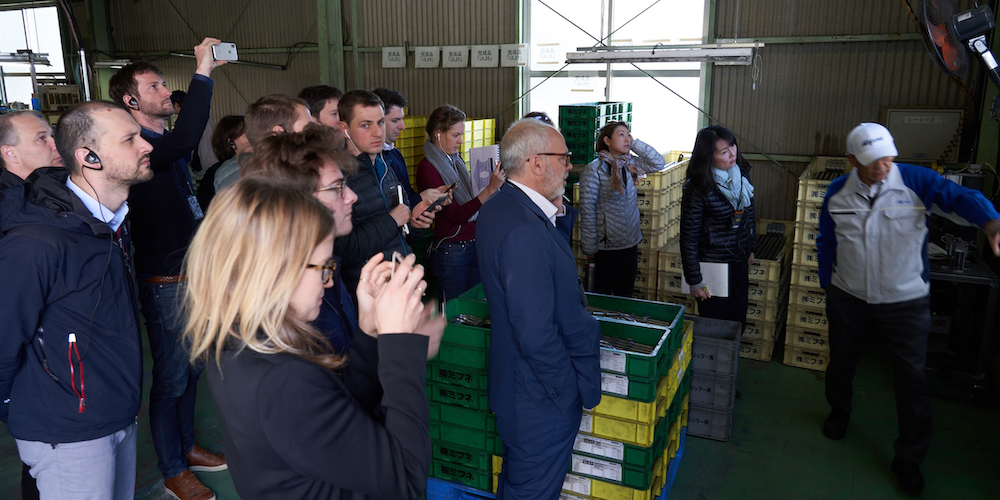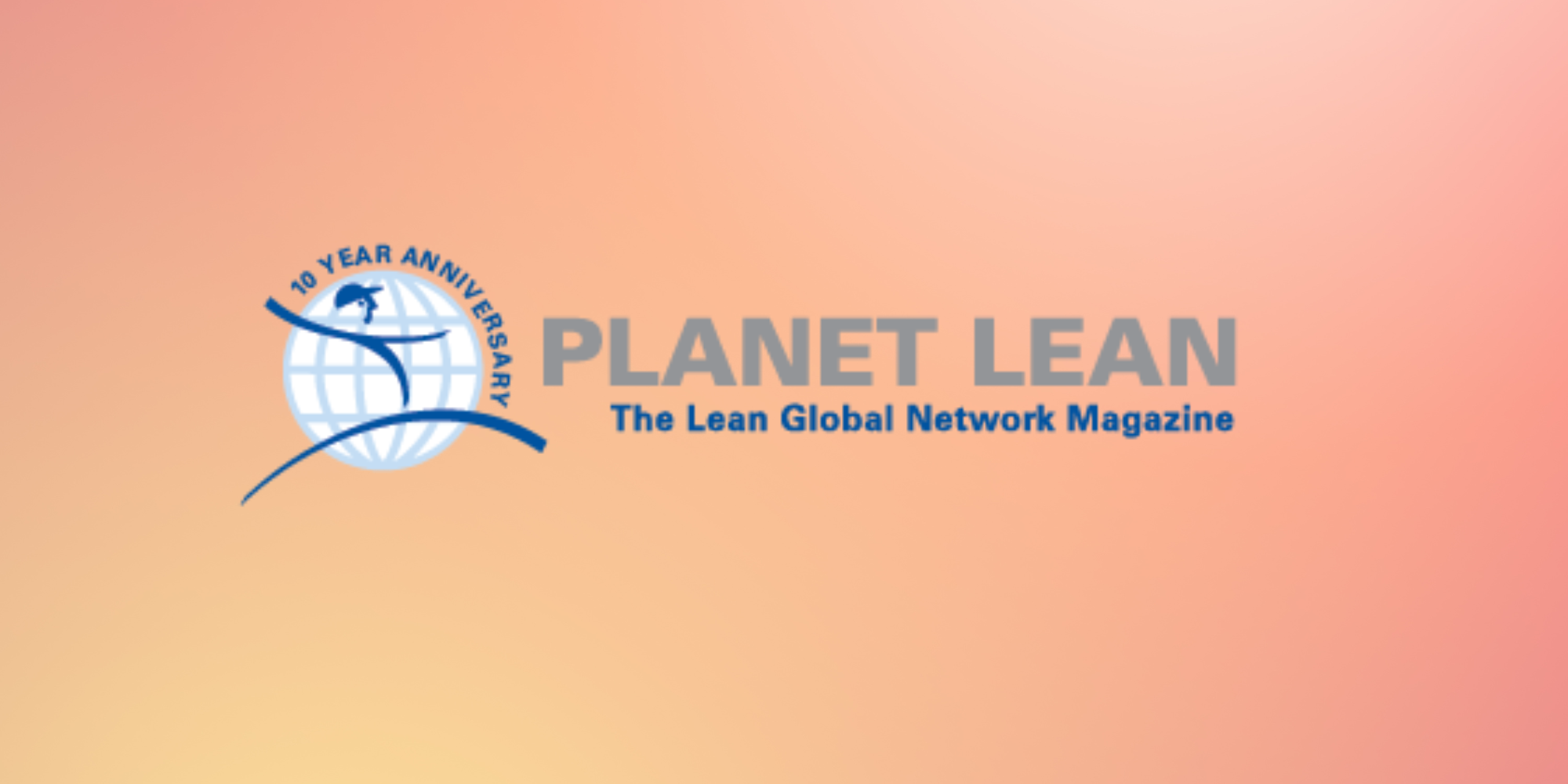
Implementing lean management principles across government
CASE STUDY – The Canadian province of Saskatchewan is running a bold experiment: applying lean management across all government. The driving force? A “compelling vision.”
Words: Dan Florizone, CEO of Saskatoon Health Region and former Deputy Minister of Education, Saskatchewan government; Trish Livingstone, Director of Business Improvement, Saskatchewan Ministry of Education
To use the now ubiquitous social media jargon, one could say that lean is “trending” in Saskatchewan. There is ever-growing interest in our improvement efforts in provincial government, which are also the number one topic during our Question Period at the Legislative Assembly.
Lean thinking has been enjoying great momentum in our province for a few years now: the first implementation took place at a regional health authority in 2006. The methodology was introduced to the entire provincial healthcare system between 2008 and 2009. In 2011, it was spread across government, involving every ministry.
But maybe I need to take a step back, and tell you a bit more about Saskatchewan – I would not be surprised if the name didn’t ring a bell in the heads of those outside of North America.
Saskatchewan is a vast province located in the Canadian prairies. In the face of a territory that is almost three times the size of Great Britain, we have a population of 1.1 million people (42% of whom lives in our two major cities, Saskatoon and capital Regina).
Before you ask… yes, it does get bitterly cold here in the winter. However, that is definitely not enough to keep people away: Saskatchewan has a booming economy, largely based on the mining and oil and gas industries, that is attracting a large number of people every year.
In this sense, we have started our lean journey from a very different place than most organizations, with a prosperous economy rather than the much more common burning platform. Without a doubt, our manageable size (in terms of population, that is) also contributed to creating ideal conditions for lean to thrive: we have 43,000 people working in the health sector and 23,000 across education.
Our driver was not a crisis, but what I like to call a ‘compelling vision’ based on the idea that we could be so much better at meeting the needs of a growing and demanding population in the face of limited resources.
“A compelling vision for change was critical to capturing the hearts and minds of people. A promise of a better future draws upon everyone’s intrinsic motivation to want to do their best and leads to a greater commitment to the change. Almost everyone comes to work to do a good job. Most public servants, healthcare workers, teachers and administrators entered their professions because they wanted to make lives better. By reconnecting with that purpose and providing them with the tools and time to improve, a culture of improvement can be created.
At the same time, we needed to draw attention to things that were not working well and ways in which we could do better. This information can help create urgency for change. Some examples might be our medication error rates, delays in providing services to low-income families, or graduation rates. Typically, this information is buried in organizations. As we shift towards a culture of continuous improvement, we need to see these problems as opportunities and not be fearful of highlighting them. Leaders need to create a safe and supportive environment that promotes identification of issues and local problem-solving efforts.
Trish Livingstone - Director of Business Improvement, Ministry of Education
DIFFICULTIES IN GETTING THE MESSAGE ACROSS
The questions that people raise about lean, inside and outside government, are numerous. They wonder whether lean is just flavor of the month, or nothing more than cost cutting. Sometimes they fear it will translate into job losses.

We had to work very hard to ensure that not all changes were seen as a direct result of the application of lean (including cost cuts), but as improvements to the lives of students, patients, and citizens more in general.
Particularly within government, part of the challenge is that in retrospect our remarkable improvements look just like common sense, especially when we come up with inexpensive solutions. It is sometimes difficult to answer the question, ‘Why did you need lean to get to a 25-cent solution?’ The truth is, we didn’t, but the support and resources we were provided with enabled us to establish the right mindset.
Within the public service, there is an inner motivation to make a difference, and this is what ultimately allowed us to reconnect with our purpose: a stronger society, more support for those most vulnerable, the ability to have our workforce engaged to come up with great ideas to serve our citizens better.
CHANGING OUR PROCESSES
When we say that we put our citizens “first,” we mean it. We want all government services to function as a cohesive system that aims at empowering every employee to deliver citizen-centric services. That’s our vision.
The only way to achieve this is involving our patients, citizens, students, etc. in the design of our services and providing our employees with the capabilities they need to deliver those services.
We started by breaking down the sectors of our government and trying to understand waits, delays, errors, what worked and what didn’t, and we found lots of small fires that needed sorting. To date we have had over 1,500 lean improvement events.
"A number of lean events held in school divisions to date have had a direct impact on students. A few examples include:
- Ensuring early identification of, and supports for, English as an Additional Language students;
- Improving timeliness and appropriateness of student services referrals;
- Reducing the effects of transiency on vulnerable students;
- Ensuring students transfer/transition smoothly between schools and school divisions with necessary information and support services;
- Improving the coordination of multiple service agencies to provide services to children with intensive needs including the development of standard work for involving parents or guardians as a key member of the child's support team.
Other lean improvements have focused on administrative or support functions such as teacher hiring, teacher accreditation, accounts payable, transportation or facility maintenance processes."
Trish Livingstone - Director of Business Improvement, Ministry of Education
When it comes to process improvement, I think our most interesting experiments are those with the 3P method, which we use not only to design better hospitals and classrooms but also with any new process in need of a fundamental shift.

All too often, teams feel constrained by their working environments, which calls for the rethinking of an entire process. Many people would look at what we do and think that we are simply designing schools and hospitals, and in a way we are. However, more importantly, we are developing as a team and creating a new way of working that puts the student or the patient at the center.
We have six permanent warehouses across the province, established as lean labs where we can mock up new facilities, bringing people together to think through processes and designs. We can then take what we came up with in the simulations and apply it back home.
At the same time, through our tours and workshops we try to tell our people that we don’t need to wait for something new in order to be able to improve: every opportunity we have to introduce positive changes into the existing system is welcome.
What we found when designing new facilities is that our existing facilities, too, have started to change their processes and behaviors to align with what the new structure will look like. Things like cellular work or flow stations can be established without having a brand new facility.
But if we do build something, let’s make sure we build it with flexible space and with the ability to respond to changing requirements today and into the future: in a 115-bed new hospital we designed (Moose Jaw Regional Hospital) using the input of 200 among physicians, nurses and patients we saw much less rigidity than in traditional hospital blueprints.
The new layout had lots of flexible space, the basis for this being an understanding that demand and flow are variable, and that we can accommodate a surge in one area at any one time because it is not going to happen at the same time as a surge in another.
In the new layout:
- All rooms were single rooms;
- Eighteen standard rooms were designed to be easily adapted to provide more intensivecare if needed;
- Eight were built to a “Bariatric” standard, comfortably able to accommodate large patients;
- Rooms were not assigned to specific healthcare services and could easily be converted to meet different patients’ needs to avoid the waste of beds;
- Department areas were allowed to take more patients into their areas by expanding into the neighboring zones as needed;
- From an infection control and safety approach, all rooms were set up exactly in the same way;
- There were very few waiting rooms;
- In the ER, people were brought straight into the room as opposed to being bounced between the triage and the waiting area before they are roomed.
These are flexible environments. In a classroom designed using the 3P approach, we are looking for learning spaces that are not rigidly defined but are conducive to smaller teams (or cells) and where students work together.
"Typically, a new school would be designed by an individual school division, but for this project five school divisions came together through a 3P event that included students, parents, teachers and the community in a participatory design process. As a result, prototype designs for eighteen schools on nine joint-use sites (across the five school divisions) were developed based on four common core processes within the school.
Some of the unique characteristics of the design recommended by participants include:
- smaller scale learning communities that allow flexible groupings that may be utilized for a variety of groupings ranging from grade to learning style;
- adaptive and flexible construction that allows areas to transition or expand as needed;
- areas for providing learning supports have been integrated throughout;
- integrated technology within the instructional areas and throughout the facility;
- areas for teacher collaboration that also permit passive supervision of learning areas and student access to teachers when needed;
- community access during and after school hours to areas such as the child care center, family resource center, multi-purpose room(s) or gymnasiums, etc., which will increase facility utilization;
- natural lighting in internal spaces."
Trish Livingstone - Director of Business Improvement, Ministry of Education
By bringing together users and providers (especially those who recently experienced problems with our service), we have an incredible opportunity to learn from one another. The message we are trying to get across is that, whether you are building something new or readapting an existing structure, you should never ignore an opportunity to introduce more flexibility into the system.
"Early in our journey, it was sometimes difficult for employees to identify who their "customers" were and connect their work to a bigger purpose. Government workers, in particular, are often quite distanced from direct contact with clients or citizens. They are faced with multiple stakeholders (politicians, regions, advocacy groups, local boards, patients, students, families) with sometimes competing needs. It took some time to begin to shift the culture and grow awareness of who we ultimately serve and how we may not have always put their needs first in the past.
Initially there was some hesitancy about involving our clients in our improvement work – "What if they see that things are not working all that well?" With time, we realized our clients already know what's not working – they are experiencing it! We learn so much when they are in the room with us designing or improving services or policies. There's no replacement for the real thing! The direct involvement of clients and families has been a "game changer." It changes team dynamics, it helps keep us focused on patients' needs first, over our individual, provider group, or system needs. They can tell us why certain ideas will or will not work from a customer's perspective."
Trish Livingstone - Director of Business Improvement, Ministry of Education
PEOPLE DEVELOPMENT
Building the improvement capabilities of our workforce and leaders is of course of critical importance for us as we progress on our lean journey.
Our focus at leadership level is on learning, seeing and doing: rather than trying to convince leaders why we should take lean on, we think it is important for them to see it in action. So we take them to the gemba, either a similar facility (like a hospital if they work in healthcare) or somewhere out of their comfort zone (like a manufacturing plant).

There is nothing like “seeing lean” to put things in perspective. It shows people our vision fully articulated, and encourages them to think how those lessons can apply to them. It also helps them gearing their minds towards trying to see things from a citizen’s perspective.
You must experience the service as a citizen or a student if you are to really understand how it performs and how it can be improved.
We of course provide training and education (23,400 government and healthcare employees have gone through foundational lean training; 158 people are certified lean leaders, with 740 more in the process of becoming certified; and 300 government employees have completed three-day lean training) but most of our approach to developing people is based on the ideas of “going to see” and “learning by doing.” It really is a matter of rolling up your sleeves and getting busy to see what improvements can be made.
Our goal is to create a workforce of problems solvers, but also of problem seekers with a passion for findings things to fix.
It takes time, but our culture is starting to shift. And it is very exciting for us to see lean spreading to local government as well, as we realize we need to work more closely with both the federal government and municipal authorities if we are to really improve the services we provide. We might make a distinction between different levels of government, but citizens don’t.
On the management style: "The Ministry of Education is in the process of completing its first full cycle of hoshin kanri. The introduction of lean into the strategic planning processes is stimulating a number of cultural shifts in how the organization achieves outcomes. Some of the changes in management style include: new problem-solving methods; increased accountability and transparency regarding plans and outcomes; a sector-wide shared focus on a few common goals; engagement of front-line staff, both government employees and sector staff (e.g., teachers, administrators) in identifying and selecting priorities and developing action plans; new visual management practices; and a structured method to align resources and efforts." On the basic thinking driving the transformation: "The Government of Saskatchewan has introduced lean to continuously improve its service delivery to the public. Lean has been shown to help organizations from a variety of sectors - both manufacturing and service sectors - improve the quality of the services they provide so that they can better meet the needs of those they serve. We are confident lean can do the same for us.
While it has its roots in manufacturing, we believe lean has even more significance for creating value and eliminating waste in government services. Our efforts to date have already yielded higher quality results and a more satisfying experience for our clients, their families and employees.
Lean philosophy and methodologies align well with our government's mandate to put citizens first in all that we do. They help us achieve a shift in government's focus from the inside-out to the outside-in, meaning that service access and delivery is not based on what is easiest for the workplace, but rather what is best for Saskatchewan citizens."
On the cultural shift that took place: "My experience at the Ministry of Education has shown me that the principles and management system associated with lean are universal and can work in any sector when applied correctly. The goal is to create a workforce of problem solvers, focused on improving service every day. I've also learned that cultural change takes time, courage and persistence. It's a marathon, not a race. The shift is evident in places but not yet pervasive, so the journey continues."

Trish Livingstone - Director of Business Improvement, Ministry of Education
SAMPLE RESULTS
- Eliminated backlog of 2,200 out-of-country health claims
- 32% reduction in backlog of labor standards complaints
- Student loans processed in 2-3 days, down from 12
- Saskatchewan Polytechnic international applications processed in 15 days, down from 90
- Horizontal well applications processed in 1 day, down from 30 days
- Payment process for Public Guardian and Trustee reduced from 5 to 1.5 days
- Crown lands sales down to 76 days, down from 90
- Speech therapy wait reduced from 8 weeks to 4 weeks
- Occupational therapy wait reduced from 18 to 7 weeks
THE AUTHORS


Read more


WOMACK’S YOKOTEN – In his first column of 2018, the author looks at one of the most talked about companies in the world, Tesla, from a lean point of view.


FEATURE – Digital organizations are starting to recognize that Toyota’s unique approach can show them the way forward, just like it does “traditional” organizations. Here, we hear from a few startup CEOs following their trip to Japan.


FEATURE – Ten years ago, Planet Lean was launched as a new platform for the Lean Community to share its experiences and knowledge. Our editor reflects on the magazine's mission, history and contribution of the spread of Lean Thinking.


RESEARCH – The author reflects on several highly-ranked academic publications to paint a picture of salient lean knowledge, both past and present, and suggests several avenues for future lean research.

